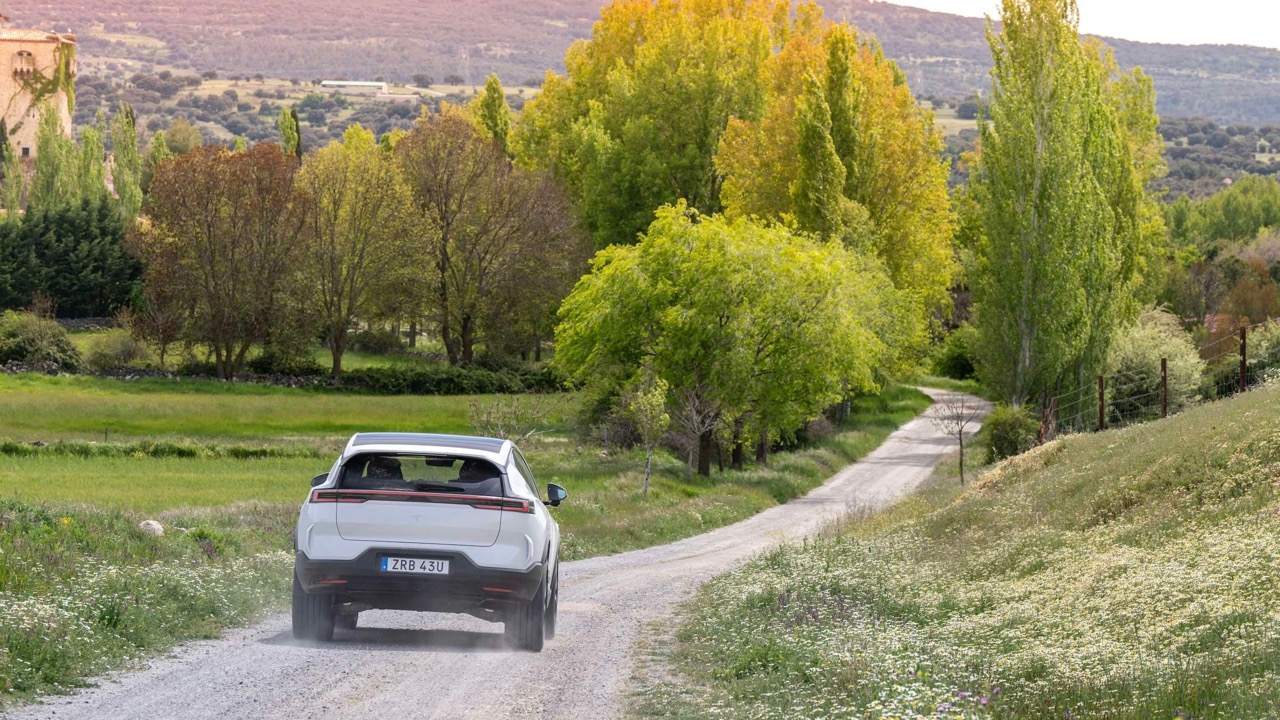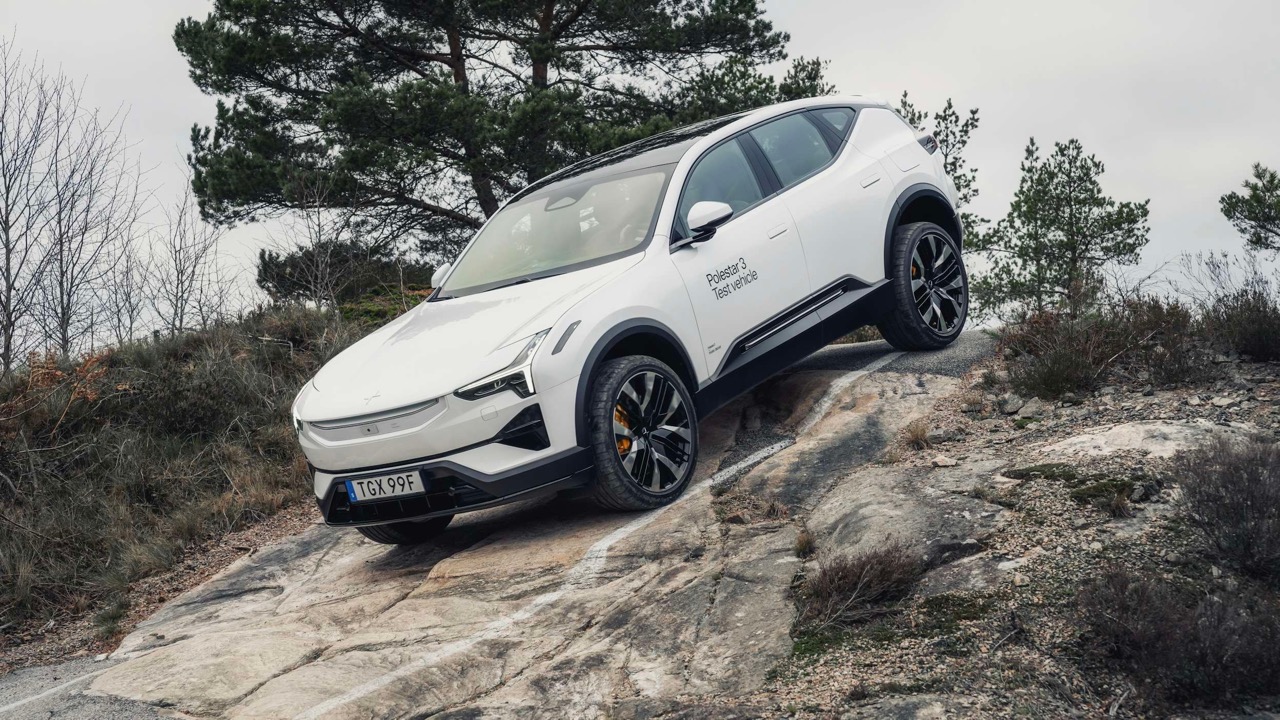As electric vehicles get longer and longer ranges and charging stations become more widely available, so too are their uses. Off-road driving is becoming more and more popular, and Roger Wallgren, Polestar's Director of Vehicle Dynamics, explains why the Polestar 3 is a great companion for exploring remote roads. Hiking and off-road driving have amassed quite a following in recent years. The idea of being able to load a weekend's worth of gear into the back of a car, head for the hills and find a peaceful spot in the wild is naturally appealing. Right now, the off-road scene is dominated by gas-powered vehicles, but that will change as more electric off-road vehicles come to market. Doesn't it sound better to be able to have your own escape without the exhaust gas?
Hiking and off-road driving have amassed quite a following in recent years. The idea of being able to load a weekend's worth of gear into the back of a car, head for the hills and find a peaceful spot in the wild is naturally appealing. Right now, the off-road scene is dominated by gas-powered vehicles, but that will change as more electric off-road vehicles come to market. Doesn't it sound better to be able to have your own escape without the exhaust gas?
Electric vehicles have an added advantage in that they have a low centre of gravity. When it comes to tackling rough terrain, good ground clearance means you can tackle any challenge, but keeping the vehicle's weight as low as possible means it will have a more stable footing. “The low centre of gravity is a big factor, and the Polestar 3 has a similar centre of gravity to the Polestar 1 because the battery is placed as low as possible. On hills or when driving at an angle, the risk of rollover is low. It’s like being in a sports car, which is basically what you have,” Wallgren explains. High but low centre of gravity is nice. But what about power? Polestar models are known to have some explosive power, but off-road, it’s all about how that power and torque is delivered. “The huge wheel torque that’s always available is a big advantage in this regard,” Wallgren continues. “With one-pedal driving, you have smooth, controllable torque at all times. There’s almost no jerking when requesting torque to propel the vehicle forward, and you get smooth control. Electric vehicles are on a different level in terms of accuracy and precision in requesting wheel torque.”
High but low centre of gravity is nice. But what about power? Polestar models are known to have some explosive power, but off-road, it’s all about how that power and torque is delivered. “The huge wheel torque that’s always available is a big advantage in this regard,” Wallgren continues. “With one-pedal driving, you have smooth, controllable torque at all times. There’s almost no jerking when requesting torque to propel the vehicle forward, and you get smooth control. Electric vehicles are on a different level in terms of accuracy and precision in requesting wheel torque.”
Having full control of the torque is obviously beneficial, but more important is where it actually lands. The Polestar 3 is equipped with technology to ensure that power only goes where it’s needed. Many internal combustion vehicles have hardware to help with this process, usually differentials (a high-level engineering feat) that allow wheels on the same axle to spin at different rates to help with cornering and off-roading. But it's not as precise as expected. The Polestar 3 replaces the differential with a clutch on each side, which gives you the opportunity to control the torque to each wheel individually, thus preventing the tires from slipping. Wallgren added: "We replaced the differential with a clutch, which allows you to control the torque to each wheel individually, preventing the tires from slipping in the first place. You can compare it to a limited slip differential, whether it is electronically controlled or otherwise, but it's a step up from a limited slip differential. It's about finding the best traction on each side."
So when can we quietly drive a Polestar to our own hidden place for a nice weekend? According to Roger Wallgren, this is not impossible with the upcoming Polestar 3. "The Polestar 3 is not designed specifically for off-roading, but it does have the potential to do so," Wallgren said. Its advantages are obvious from the beginning: good ground clearance, independent power to each wheel, plenty of space, and plenty of torque. So although it is not a professional off-road vehicle, it does have good capabilities. The Polestar 3 has a starting ground clearance of 200mm, which is good for off-roading, but its approach angle (how steep a hill the vehicle can climb without damaging the front end) may not be 100% perfect. Wallgren offers a solution: "If you want to take full advantage of the suspension, increase the ground clearance to 250mm, so the approach angle becomes steeper. For off-roading, the suspension is a good starting point. Of course, all SUVs have higher suspension, and some use air suspension like the Polestar 3, but not all have the advantage of an extra 50mm."
The Polestar 3 has a starting ground clearance of 200mm, which is good for off-roading, but its approach angle (how steep a hill the vehicle can climb without damaging the front end) may not be 100% perfect. Wallgren offers a solution: "If you want to take full advantage of the suspension, increase the ground clearance to 250mm, so the approach angle becomes steeper. For off-roading, the suspension is a good starting point. Of course, all SUVs have higher suspension, and some use air suspension like the Polestar 3, but not all have the advantage of an extra 50mm."
With these systems, the Polestar 3 knows immediately which wheel has low or even no grip. With this information, it does not spin the wheel unnecessarily, but sends the right amount of torque to the right place to keep you moving in the right direction.
These characteristics make the Polestar excellent off-road. The low center of gravity makes for excellent handling, the power you need when you need it makes it fun to drive, and the adjustable suspension improves efficiency. These advantages all help when the going gets rough. Wallgren stressed that although the car performs better than you expect, it has not yet been fully tested off-road. We think Polestar 3 really shows the potential of electric vehicles in off-road driving. The low center of gravity and strong torque control not only enhance driving pleasure, but also increase driving safety. Although it is not a dedicated off-road vehicle, I am very much looking forward to seeing its performance in actual off-road. Imagine driving such a car to explore nature on the weekend and quietly enjoy the emission-free driving experience. What a wonderful thing it is! For friends who like adventure, this is really a choice worth looking forward to.
We think Polestar 3 really shows the potential of electric vehicles in off-road driving. The low center of gravity and strong torque control not only enhance driving pleasure, but also increase driving safety. Although it is not a dedicated off-road vehicle, I am very much looking forward to seeing its performance in actual off-road. Imagine driving such a car to explore nature on the weekend and quietly enjoy the emission-free driving experience. What a wonderful thing it is! For friends who like adventure, this is really a choice worth looking forward to.
Categories: vehicles
